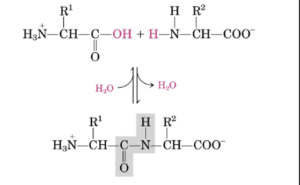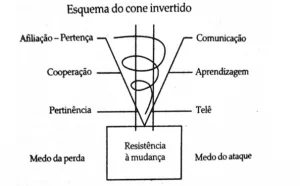BIBLIOMETRIC REVIEW
TAKAHASHI, Andressa Yumi [1]
TAKAHASHI, Andressa Yumi. Psychological problems coming from the search for the beautiful body in the context of the social majority. Revista Científica Multidisciplinar Núcleo do Conhecimento. Year 05, Ed. 09, Vol. 09, pp. 23-34. September 2020. ISSN: 2448-0959, Access link: https://www.nucleodoconhecimento.com.br/psychology/beautiful-body
SUMMARY
The objective of this writing was to bring the problem of worship to the beautiful body in contemporary times, presenting the historical construction of the female body until the 21st century as well as the controversial pattern of beauty imposed by the media and capitalist society that causes pathological conditions and biopsychosocial losses. For this purpose, the bibliographic research was used in the Freudian social and psychoanalytic sphere, which had as main result the relationship between the female body for the other and the eating disorders.
Keywords: female body, beauty pattern, media, capitalism, eating disorders.
1. INTRODUCTION
We live in a society where it presents a variety of possibilities of bodily alterations in order to correspond to the cult of the beautiful body in contemporary times. This theme brings problems to be discussed since it damages the mental health of people affected by alienation as to their body sustained by the weight loss industry.
Starting from these principles and understanding the body as a sociocultural construction, the present study aims to discuss, from the social and psychoanalytic view, the influence of the interests of the capitalist system along with the display of social representations about the distortion of images and eating disorders.
Michel Foucault (1987) states that:
[…] in any society, the body is trapped within very tight powers, which impose limitations, prohibitions or obligations on it. […] It is then formed a policy of coertions that is a work on the body, a calculated manipulation of its elements, its gestures, its behaviors. The human body enters a machinery of power that the scan, disarticulates and recomposes it. (FOUCAULT, 1987, p.119).
Through this citation, we perceive the form of social control related to the body, we call this phenomenon as aesthetic pressure, which exposes itself as a triggering factor of eating disorders as well as other psychiatric disorders. This aesthetic pressure from vectors such as beauty and capitalism industries are increasingly present in advertising campaigns and media products producing misrepresented beliefs, which is believed that the body is totally malleable disregarding genetic and biological factors and the belief that by acquiring the idealized body will succeed in other areas of life: the result of a society where there is a stigmatization when it comes to the intellect of women and also the product of a sociocultural construction in that women’s achievements are overshadowed merely by weight and body.
The dedicated efforts around the ideal body, which is currently an unachievable idea, are justified by its identification as a new model of human happiness. As Silva (2001, p.55) explains, the transition to this new universal “[…] takes place through technology that invests deeply in the issues of the body, itself identified with the progress and service of the market, which seeks to expand unlimitedly”.
The bibliographic research included articles published in public and mental health journals, based on the keywords: female body, eating disorders, media and subjectivity, capitalism, beauty industry, femininity and psychoanalysis.
2. FEMININITY AND PSYCHOANALYSIS
In Psychoanalysis, discussions about the woman’s body begin with studies on hysteria. It was due to the clinical observations of hysterical women that Freud developed his theory, in addition, it was the first non-medical formulation about the body. According to authors such as Birman (1998) and Garcia-Roza (1990) Psychoanalysis is a science of the psyche, that is, the body it treats is not the anatomical body, but the body constructed by culture. This topic aims to analyze the development of femininity as positions constructed psychically, because “Freud finds that no one is born a woman, this condition is built”. (TOMAZ, 2001, p. 81).
In childhood there is only one sex: the male in turn then femininity does not exist from the beginning for a girl, she will only be able to assume the female position when she assumes a maternal condition which also weakens the envy of the penis. That is, in that socio-historical context, Freud links femininity with motherhood and passivity and the baby then characterizes itself as the phallus of the woman.
Beforehand, Lacan reviews Freud’s works and unlike Freud, Lacan states that there is no single signifier that will define what it is to be a woman, this means that understanding about women is not universal and femininity does not necessarily need to be linked to motherhood. The woman is a unique anatomy constructed through the fantasmatic scenario of each one, so it is necessary to understand the singularity and subjectivity of each woman.
[…] the notion of femininity can help both to understand contemporary forms of subjectivation and to create spaces for diversity, otherness and singularity, a task from which we analysts should not be blinded (NUNES, 2002, p.57).
3. HISTORICAL CONSTRUCTION OF THE FEMALE BODY
The body is the sign of a history, that is, it is understood not only with biological and physiological factors, but as a product of a cultural, historical and social construction. For Silvana Goellner (2003):
The body is also what is said of it and here I am claiming that the body is also built by language. That is, language not only reflects what exists. It itself creates the existing and, with respect to the body, language has the power to name it, classify it, defer to it normalities and abnormalities, to institute, for example, what is considered as a beautiful, young and healthy body. These representations are not universal or even fixed. They are always temporary, ephemeral, fickle and vary according to the place/time where this body circulates, lives, expresses itself, produces and is produced. (Idem. Ibid: 29).
That is, it is through language that the concept of “beautiful” is instituted and it was through the historical changes of the concept of body before the influence of the media and capitalism, that new practices aimed at the body itself emerged.
Today’s ideals of beauty are not the same since forever. The female social imaginary body undergoes several transformations. Since antiquity we have heard about the social practices of beauty, but as stated earlier, the concept of body varies according to the socio-cultural moment we are experiencing.
In the 12th and 13th centuries, clothes such as the corset were used to accentuate the silhouette highlighting the attributes considered feminine as well as to show the power that her husband had: men saw women as their hangers and to be able to flaunt, put on them the pieces they could afford. However, in the 19th century, the corset was put into disuse due to the discourse of the hygienists, who claimed that the corset caused deformations in the female bodies.
Then, throughout the twentieth century, the human body was synonymous with health and well-being. It was in 1930 that the cult of the beautiful and thin body was inserted in the media along with an announcement about plastic surgeries and aesthetic interventions. In the 1940s and 1950s, the reference to femininity was Marylin Monroe with her wide hip and rich breasts.
From the 1960s onto physical beauty, physical beauty is no longer taboo, which eventually promoted the use of cosmetics, performing cosmetic surgeries, reproducing the body as a product and social object.
Currently, the female body undergoes aesthetic pressure through the beauty industry and the media that determine a standardized form of conception of feminine beauty: no sagging, well-defined bodies, thin waist, firm and rounded breasts and buttocks. One lives in the era of images, in which the aesthetic perfection of the body is prevalent and reinforced by unattainable models, women live in an incessant search for the “ideal body” reinforced through the media, with the attempt to be accepted by society and many end up falling ill by the mechanisms used to maintain profitability around the cult of the body.
4. BEAUTY AND CAPITALISM INDUSTRY
The culture of consumption, closely linked with the development of industrialization, generated a need for expansion of fashion and beauty based on the concept of the “reconstituted body”, that is, subject to change through experiences, practices and aesthetic products. In this sense, the body and image become a fundamental field of action of the capitalist movement thus expanding the beauty industry, the market of goods and services destined to the maintenance of the body.
Capitalism developed in the late eighteenth and early nineteenth centuries and thus made the female body the main force of production and workforce, due to the dissatisfaction that women show in front of their own body because of the standards of beauty imposed by society. So the beauty industries create products and human characteristics are now conferred as commodities. João Bernardo (2004, p.68) states that: “[…] it is the individual himself who intends to shape, and the standards are not chosen by consumers, but imposed massively by the same companies that sell beauty products and services”.
Therefore, from capitalism beauty came to be bought, the beauty market begins to offer numerous options of aesthetic procedures as well as beauty products to “make a woman more beautiful”. The body ends up generating the abandonment of the BE and leaving for the use of HAVE in the same way that subjectivity ends up being reduced to the body. Today, the me is the body.
As Costa describes (2004)
[…] satisfaction with two ideals of pleasure disseminated in today’s culture. The first roughly corresponds to what critical or ordinary common sense calls ‘hedonism’ or ‘narcissism’. This is the less obvious and more pedestrian sense of expression. It is admitted, without empirical foundation, that most of the subjects today conditioned personal satisfaction or self-realization to the enjoyment of sensory ecstasy. It is the thesis of the subject ‘collector of sensations’, in his moralistic or prejudiced version (COSTA, 2004a, p. 92).
That is, through the standards imposed by society on beauty and the ideal body, we are increasingly being guided by the desire to HAVE the body and not BE. Thus, we live in a narcissism based on what culture defined, consisting of processes of identifications and constitutions of the psychic apparatus.
The need for the surgeons’ market becomes imaginary since there is nothing wrong with the physical appearance of women, since a social change could solve. That is why, in order to obtain their income, surgeons are dependent on the deformation of perception and intensification of hatred in themselves by women. (WOLF, 1990).
Capitalism together with the beauty industries use techniques, procedures, regimes, cosmetics as a force of oppression women desding themselves from distorted reflexes on their own body self-image. That is, for beauty industries it is advantageous that women are dissatisfied with their own body.
5. THE BODY OF THE CONTEMPORARY WOMAN IN MAGAZINES AND MEDIA
Consumption is not only due to beauty industries, but also through social networks in which they show a forged and fragmented reality. The media is the subject in relation to the other, which makes it impossible and hinders the process of manufacturing women’s subjectivities once the media and beauty industries instill, together with the possibility of choices offered by the market, a standardized model of beautiful body.
Advertising strategies provide a false image, producing individuals with distorted self-image. Especially women, are bombarded by advertisements of numerous products, often misleading and overrated, which promise an unreal result. This can be observed in the behavior of numerous digital influencer, who often hide their plastic surgeries, by publicizing creams and braces as responsible for their “perfect body”.
Moreover, another agenda to be addressed in relation to contemporary women in magazines and media are the issues of social representations. The model of propagation of beauty pattern, presented in media and magazines, becomes a problematic factor, as it places as an influential channel generating changes in behavior, emotions and feelings due to chronic dissatisfaction with your body. In other words, currently the media plays a very influential role in the practices of individuals who end up being a producer of symbolic violence, because it makes women increasingly homogeneous and easy to be deceived by advertising, excluding and then invisible other bodies besides that so-called “ideal body”.
For Pierre Bourdieu, symbolic violence is committed with complicity between those who suffer and who practice, without often being aware of what they are suffering or exercising, thus contributing to a space of exclusions and invasions.
6. BEAUTY STANDARDS AND EATING DISORDERS
Concomitantly with women influencers who contribute, even unconsciously and unpurposely, to the worship of the beautiful body and aesthetic pressure there are influencers who have been public ly reporting that they are also victims of this aesthetic pressure as well as eating disorders. (ED). A current example, the influencer Rica de Marre, who after being the target of several misheacious comments about her body and weight, vents through Instagram that she took appetite suppressant and fell ill soon after.
Social and cultural pressure is not a causal factor, but it can be a triggering factor for ED. According to the literature and authors such as Hercovici and Bay (1997) the ideal of thinness is one of the central cultural factors for the increase of these disorders, especially bulimia and anorexia nervosa.
The standard of beauty constructed by society is unconsciously incorporated by it. Currently, as a result of the search for this pattern, there was the emergence of an obsession with control and modeling of the body, as well as the concern and fear of obesity. (ANDRADE e BOSI, 2003). Anorexia and bulimia are prevalent disorders in women and are intrinsically related to the ideal of femininity.
Eating disorders, according to DSM V, are characterized by individuals who present a prevalent idea involving excessive concern with weight and body shape (fear of gaining weight), which leads to engaging in extremely restrictive diets or using inappropriate methods to reach the idealized body. In bulimia, episodes of excessive eating (accompanied with a lot of guilt) are frequent and followed by some purgative method such as laxatives and vomiting induced, anorexia is characterized by weight consisting of weight consisting of below the minimum of normality.
Kelnner (2001) considers that the incessant search for the perfect body leads to conflicts with our human limits and often end up triggering psychopathological symptoms such as depression, anxiety or melancholy and eating disorders. To be accepted, the subject ends up undergoing situations without considering his body with physiological, biological, genetic factors, a situation called by some authors of setting point.
In the psychoanalytic view, eating disorder is a disorder produced by the interaction of the body with the environment and the increase in cases of eating disorders can also be understood as an effect of the way of organization of society in which food does not promote union. For Freud, in Totem and Taboo, food has the function of promoting social bond and when it is unable to fulfill this function, food acquires an attribute of anguish. ED such as anorexia and bulimia are then manifestations of psychic suffering related to a psychic failure linked to early rupture in the relationship with the subject’s maternal figure.
The ED are due to an inadequate maternal libidinal investment (insufficient or exaggerated), with flaws in the constitution of the body as a psychic object. In this sense, the mother-daughter relationship ends up being problematic, because libidinal investment occurs in a fusion in the identification between both, not occurring to the particularization between the mother and the daughter. Thus, the symptoms of eating disorders are expressed and created as a form of defense by the ego.
6.1 ANOREXIA NERVOSA
The term anorexia comes from the Greek orexis, which means desire in general (and not just desire to eat), preceded by the prefix a of denial, thus resulting in denial of desire. That is, the anorexic individual often feel hungry, but deny desire.
The diagnostic criteria for anorexia nervosa, according to DSM V, are: restriction of caloric intake in relation to needs, resulting in an extremely low body weight if considered the context of age, gender, developmental trajectory and physical health; significantly low weight (defined as a weight below the normal minimum weight) or lower than the minimum expected, for children and adolescents, usually comes from an intense fear of gaining weight, or from routine behaviors that interferes with weight gain, even if it is significantly low. Disturbance with own weight or body shape are experienced, in addition to the undue influence of weight or body shape on self-assessment or persistent absence of recognition of the severity of the current low body weight.
In psychoanalysis anorexia is considered as a disorder of orality, in which there is still no differentiation between the individual and the object. Thus, the act of not eating in cases of anorexia is related to a strategy of separation from the other, or rather, strategy of separating from the domain of the maternal gaze providing a mode of resistance and possible affirmation of its own desire for an autonomous self.
That is, this “not eating, refusing the fundamental link of the first relationship with the mother, seems to be a great beginning to stage this revenge, or protest” (GOGARTI, 2002, p. 119). Through the refusal of food, the subject aims to bar the other mother, trying to reverse this relationship of dependence towards her.
6.2 BULIMIA NERVOSA
The term bulimia, which dates back to ancient Greece, derives from the Greek term “bous“, ox and “limos“, hunger, that is, “ox hunger” and is characterized by the ingestion of large amounts of food in a short period of time, followed by purgative methods such as the use of laxatives and self-induced vomiting.
The diagnostic criteria of bulimia nervosa, according to DSM, are characterized by recurrent episodes of binge eating; recurrent inappropriate compensatory behaviour in order to prevent weight gain; binge eating and inappropriate compensatory behaviors occur, on average, at least once a week for three months; self-assessment is unduly influenced by body shape and weight and the disturbance does not occur exclusively during episodes of anorexia nervosa.
In the psychoanalytic view, the bulimic act comprises the experience of the complete being and having the phallus, presents itself as a drive practice as a form of jouissance that contrasts with the subject of the unconscious.
7. CONCLUSION
As we have seen, the female body is built historically and culturally. Since the 12th century the woman’s body is considered as body to the other, that is, a body to satisfy the demand of man. Through several changes, currently faced with the influence of the media and capitalism, the cult of the beautiful body emerged in new pathological practices aimed at the body itself as occurs in cases of eating disorders. Eating disorders are caused by multifactorial variables, but in the article it was considered the cultural factor and psychoanalytic order. It is then considered necessary a form of multidisciplinary treatment and it is up to the psychologist to establish and restructure the bonds established between the anorexic or bulimic individual with his parental figures in order to move to a more authentic identity, it is also necessary that it binds the beautiful body as a healthy body, free of aesthetic pressures.
REFERENCES
American Psychiatric Association. (2014). Manual diagnóstico e estatístico de transtornos mentais: DSM-5 (5a ed.; M. I. C. Nascimento, Trad.). Porto Alegre, RS: Artmed.
ANDRADE, A; BOSI, M. L. Mídia e subjetividade: impacto no comportamento alimentar feminino. Revista de Nutrição, [S.L.], v. 16, n. 1, p. 117-125, jan. 2003.
BERNARDES, T. Adolescência, Mídia E Transtornos Alimentares: Uma Revisão Bibliográfica. 2010. 34 f. TCC (Graduação) – Curso de Enfermagem, Universidade Federal do Pampa, Uruguaiana, 2010.
BIRMAN, J. (1998). A epopéia do corpo. Nostalgias. Em Bastos, L. A. M. Eu-corpando. O ego e o corpo em Freud (pp. 09-24). São Paulo: Editora Escuta.
BERNARDO, João. Democracia totalitária: teoria e prática da empresa soberana. São Paulo: Cortez, 2004.
BITTAR, C; SOARES, A. Mídia e comportamento alimentar na adolescência. Cadernos Brasileiros de Terapia Ocupacional, [S.L.], v. 28, n. 1, p. 291-308, 2020. Editora Cubo.
FLOR, G. Corpo, mídia e status social: reflexões sobre os padrões de beleza. Rev. Estud. Comun, Curitiba, v. 23, n. 10, p. 267-274, dez. 2009.
FORTES, I. Anorexia: o traço da obstinação na clínica psicanalítica. Revista Latinoamericana de Psicopatologia Fundamental, [S.L.], v. 14, n. 1, p. 83-95, mar. 2011.
FOUCAULT, M. Vigiar e punir: nascimento da prisão. Rio de Janeiro: Vozes, 2009b.
FOUCAULT, M. Os corpos dóceis. Vigiar e punir: nascimento da prisão. 29ª ed. Tradução de Raquel Ramalhete. Petrópolis, RJ: Vozes, 2004a, p. 125-52.
GOELLNER, Silvana Vilodre. “A produção cultural do corpo.” In: LOURO, Guacira Lopes; NECKEL, Jane Felipe; GOELLNER, Silvana Vilodre. (Orgs.) Corpo gênero e sexualidade: um debate contemporâneo. Petrópolis, Vozes, 2003.
GARCIA-ROZA, L. A. O mal radical em Freud. Rio de Janeiro; J. Zahar, 1990.
KELLNER, Douglas. A cultura da mídia. Bauru, SP: EDUSC, 2001.
NASCIMENTO, C; PRÓCHNO C. C; SILVA, L. C. O corpo da mulher contemporânea em revista. Fractal: Revista de Psicologia, [S.L.], v. 24, n. 2, p. 385-404, ago. 2012.
NUNES, S. A. O feminino e seus destinos: maternidade, enigma e feminilidade. In BIRMAN, Joel. Feminilidades. Rio de Janeiro: Contra Capa, 2002, p.35-57.
Revisão de Bourdieu, Pierre (2012), Sur l’État. Cours au Collège de France (1989-1992). Paris: Raisons d’Agir/Seuil, 672 pp.
SILVA, H; REY, S. A beleza e a feminilidade: um olhar psicanalítico. Psicologia: Ciência e Profissão, [S.L.], v. 31, n. 3, p. 554-567, 2011.
SILVA, M. Espelho, espelho meu. Brasília, 2018.
SOUTO, S; FERRO-BUCHER, J. Práticas indiscriminadas de dietas de emagrecimento e o desenvolvimento de transtornos alimentares. Revista de Nutrição, [S.L.], v. 19, n. 6, p. 693-704, dez. 2006.
VALDIVIA, O. Psicanálise e feminilidade: algumas considerações. Psicologia: Ciência e Profissão, [S.L.], v. 17, n. 3, p. 20-27, 1997.
VIANNA, C. Da imagem da mulher imposta pela mídia como uma violação dos direitos humanos. Minas Gerais.
WOLF, N. O mito da beleza, 1990.
[1] Graduation in progress in Psychology.
Submitted: September, 2020.
Approved: September, 2020.




